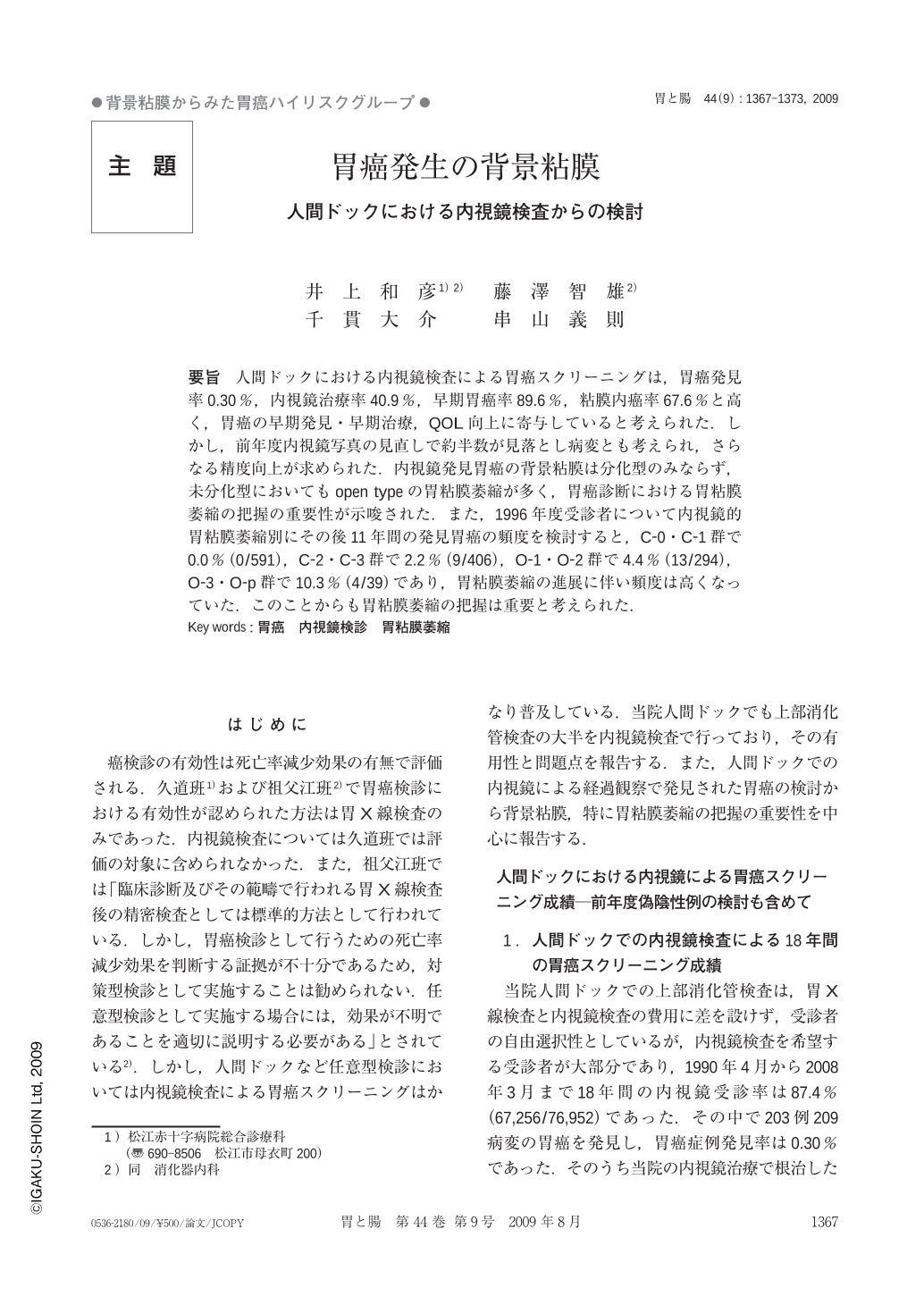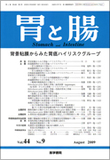Japanese
English
- 有料閲覧
- Abstract 文献概要
- 1ページ目 Look Inside
- 参考文献 Reference
- サイト内被引用 Cited by
要旨 人間ドックにおける内視鏡検査による胃癌スクリーニングは,胃癌発見率0.30%,内視鏡治療率40.9%,早期胃癌率89.6%,粘膜内癌率67.6%と高く,胃癌の早期発見・早期治療,QOL向上に寄与していると考えられた.しかし,前年度内視鏡写真の見直しで約半数が見落とし病変とも考えられ,さらなる精度向上が求められた.内視鏡発見胃癌の背景粘膜は分化型のみならず,未分化型においてもopen typeの胃粘膜萎縮が多く,胃癌診断における胃粘膜萎縮の把握の重要性が示唆された.また,1996年度受診者について内視鏡的胃粘膜萎縮別にその後11年間の発見胃癌の頻度を検討すると,C-0・C-1群で0.0%(0/591),C-2・C-3群で2.2%(9/406),O-1・O-2群で4.4%(13/294),O-3・O-p群で10.3%(4/39)であり,胃粘膜萎縮の進展に伴い頻度は高くなっていた.このことからも胃粘膜萎縮の把握は重要と考えられた.
A study of cases undergoing endoscopy for gastric cancer screening as part of an annual checkup showed a high detection rate of gastric cancer(0.30%), a rate of endoscopic treatment of 40.9%, rate of early stage gastric cancer of 89.6%, and rate of intramucosal carcinoma of 67.6%. Endoscopic screening seemed to contribute to detection and treatment at the early stages of the disease, and improvement of patients’ quality of life. However, reinterpretation of endoscopic photographs taken 1 year previously indicated that approximately half of the cases of carcinoma had been missed. Thus, endoscopic technique and quality require improvement. The major gastric mucosa showing the development of gastric cancer identified by endoscopy showed open type atrophy for not only well-differentiated, but also poor-differentiated carcinoma. These observations indicated the importance of assessing the mucosal atrophic background to discover gastric cancer. Furthermore, we investigated the detection rate of gastric cancer sorting by degree of atrophy after 11 years of screening in 1996. The results demonstrated an association between more severe atrophy and higher cancer detection rate : C-0・C-1 group, 0%(0/591); C-2・C-3 group, 2.2%(9/406); O-1・O-2 group, 4.4%(13/294); O-3・O-p group, 10.3%(4/39). This study suggested that evaluation of the mucosal atrophic background is essential for detection of gastric cancer.

Copyright © 2009, Igaku-Shoin Ltd. All rights reserved.


